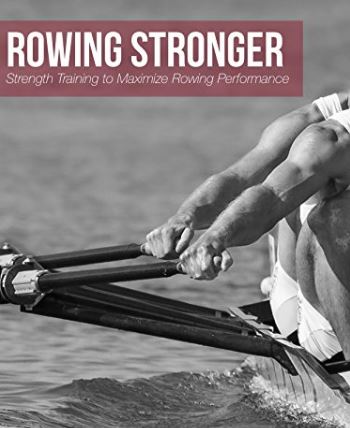This is part two of our mobility session for rowers. Strenght Coach Will Ruth, our author and Renate (in German) will give answers in case you have any questions.
Thoracic Spine Mobility for Rowers Now that you know a lot about why flexibility, strength, and technique are all important factors in the mobility puzzle, each article in this series will detail a different target area where rowers are particularly susceptible to mobility restrictions that decrease both short and long-term performance as well as health. In this article, we’ll talk specifically about the thoracic spine mobility for rowers.
Rowing and Mobility
Restriction: The thoracic spine includes the scapular muscles (supraspinatus, infraspinatus, teres major/minor), posterior deltoid, rhomboids, lower/middle trapezius, and latissimus dorsi muscles.
Location: Mid and upper back, vertebra T12 to T1
Test: Easy thoracic spine mobility test. If you can’t maintain contact between your hand and low back while reaching overhead with the other arm (keep it straight), there is a restriction. The “scapular wall slide test” is a good one as well.
Rowing fault: Hunchback posture, inconsistent handle heights, rounding during the stroke (finish, recovery, and/or catch), or over-reaching at the catch.
Fixing Tight T-Spines in Rowers
Restriction of these muscles most often displays as a rounded upper back, referred to as thoracic kyphosis or hunchback posture. The inability to reach thoracic extension or maintain a neutral thoracic spine under load causes uneven handle heights and difficulty with a “soft hands” approach at the catch, as rowers will naturally round further at the catch, making it more difficult to smoothly place the blade in the water. This also may look like overreaching, but it is really just what the rower perceives as a neutral spine because neutrality feels like extension to them. Finally, hunchback posture puts great stress on the anterior side of the spine, compressing discs and possibly causing damage to the thoracic vertebrae, especially when under load.
Exercise
Start by foam rolling broadly over the mid back. Do not roll on the lumbar spine or the neck. Roll both up and down the middle of the back as well as on the sides of the back, by the latissimus dorsi. After a few broad strokes up and down the back, begin at the bottom of the mid back and hinge up and down over the foam roller, moving up one vertebra at a time. Remember to not do this on the lower back or upper back. Further self-manual release work can be done with a lacrosse or tennis ball if you find one particular spot of tightness, commonly referred to as a trigger point.
Two tennis or lacrosse balls taped together (known as “The Peanut”) is of great use for self-manual therapy on the thoracic muscles, as is a Theracane in my personal experience. With any specific trigger point work, take special care to avoid rolling directly over vertebrae or bones, as this will cause pain. Once you have worked through the thoracic spine, move on to the stretching shown in the video [timestamp 1:43].
Rowing and Mobility: Strength Training T-Spine Muscles
Overhead press variations as well as specific scapular exercises such as the face pull, Y-W-T raise or prone Y-W-T raise, band pullapart, as well as more general mid-back exercises like the pull-up and front squat will improve the strength and postural endurance of the scapular and postural muscles of the mid back and shoulder region. The Sotts Press is also a useful activation and strengthening exercise, as seen in the mobility video. When doing these exercise, it’s essential to pay strict attention to technique and keeping shoulder blades depressed and externally rotated, also referred to as “packed” or “back-and-down.” It is common for athletes to get fatigued during a set and find themselves shifting the emphasis from the target muscles onto the lats and upper traps. Focus, re-cue, and correct. There is no point training from poor positions.
In order to enact significant, lasting change, a dedicated comprehensive program that involves all modalities is critical. I recommend focusing on one problem area at a time, at least one 10-15 minute session per day. Spending 20 minutes a day working on mobility for 2-3 weeks while watching a TV show, for instance, is a great way to progress toward full function. Foam roll, perform self-manual release on specific trigger points, and stretch, then make sure to perform additional strengthening exercises while implementing proper form into your rowing and erging training. Also, be cognizant of posture throughout the day. Many times, those with thoracic restrictions will spend much of the day hunched over. Once full function is achieved, daily maintenance is simply performing daily activities from that now-strong position that your body can now adopt as normal positions.








